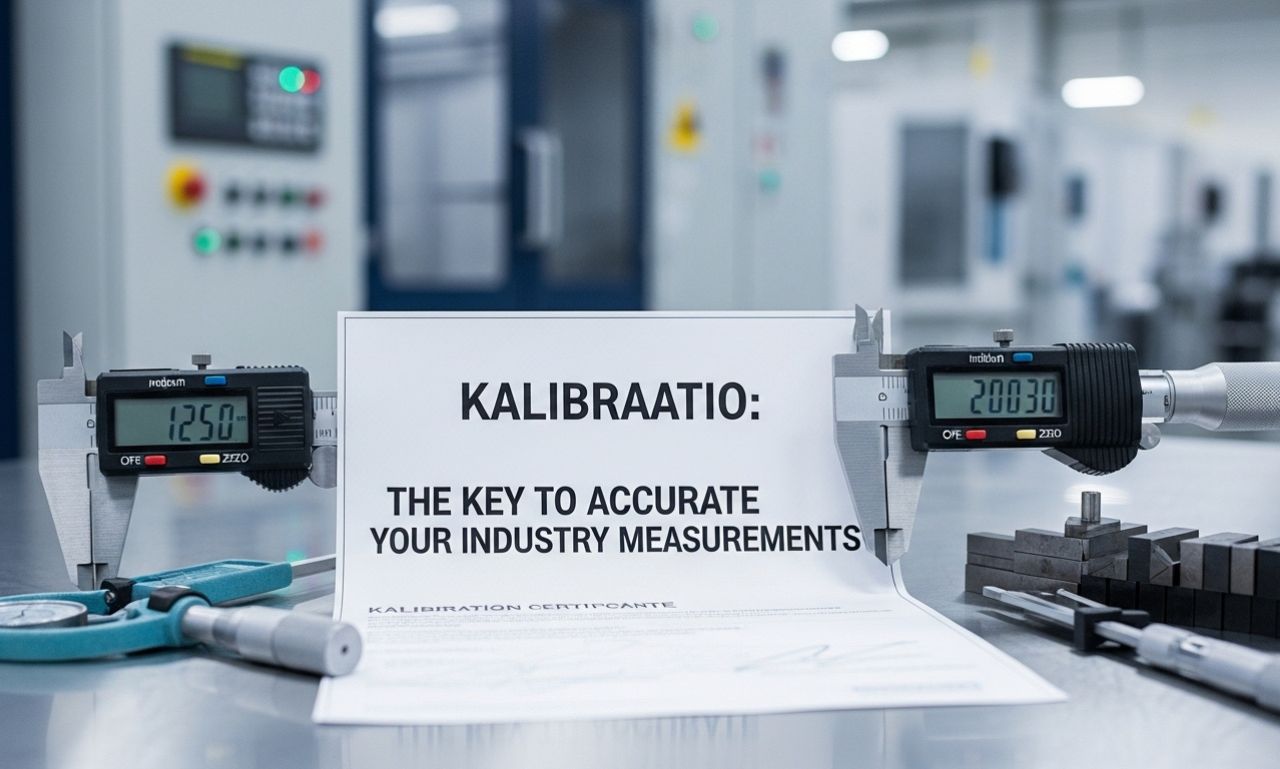Imagine working in an industry where accuracy is the cornerstone of success. Whether you’re in manufacturing, healthcare, or even tech development, precision can make or break your operations. This is where kalibraatio comes into play—a tool that ensures every measurement you take is spot-on. But what exactly is kalibraatio? And why should it matter to you and your business? Let’s dive deep into this essential process that has become a linchpin for industries worldwide, unlocking better performance and reducing errors along the way. From its rich history to its modern applications, understanding kalibraatio could be the key step toward optimizing your operational efficiency and enhancing product quality.
What is Kalibraatio and why is it important?
Kalibraatio, or calibration, is the process of adjusting and verifying the accuracy of measurement instruments. It’s all about ensuring that tools provide reliable data by comparing them to known standards.
Why does this matter? In an age where decisions are driven by precise information, even a small error can lead to significant consequences. Think about industries like aerospace or pharmaceuticals—any deviation in measurements could compromise safety and efficacy.
Furthermore, kalibraatio enhances quality control. Regularly calibrated instruments help maintain consistent product specifications and reduce waste. This leads not only to cost savings but also builds customer trust.
In essence, kalibraatio lays the foundation for operational excellence across various sectors. By prioritizing accurate measurements, businesses can foster innovation while minimizing risk.
The History of Kalibraatio and its Evolution in Different Industries
Kalibraatio has a rich history that traces back centuries. Initially, it was developed in the realm of scientific measurement to ensure accuracy in experiments and observations. Early instruments required meticulous calibration to produce reliable results.
As industries evolved, so did kalibraatio methods. The industrial revolution marked a significant turning point. Manufacturers sought greater precision in machinery and tools, prompting advancements in calibration techniques.
In the 20th century, kalibraatio expanded its reach into sectors like healthcare and telecommunications. Instruments used for patient monitoring or signal processing became highly specialized, requiring rigorous calibration standards.
Modern technology now plays a major role in this evolution. Digital sensors and automated systems have transformed how industries approach kalibraatio, making processes faster and more efficient than ever before. Today’s landscape is characterized by continuous innovation aimed at achieving higher levels of precision across various fields.
The Benefits of Using Kalibraatio in Your Industry
Kalibraatio offers a range of benefits that can significantly enhance the efficiency and accuracy of your industry measurements. One primary advantage is improved precision. Accurate measurements reduce errors, ensuring higher-quality products and services.
Cost savings are another key benefit. By minimizing discrepancies in measurement, businesses can avoid costly reworks and waste materials. This directly impacts the bottom line, enhancing profitability.
Additionally, Kalibraatio fosters compliance with industry standards and regulations. Meeting these requirements not only boosts credibility but also helps in maintaining customer trust.
The implementation of Kalibraatio leads to better decision-making as it provides reliable data for analysis. Teams can make informed choices based on precise information rather than guesswork.
Integrating Kalibraatio into your processes promotes continuous improvement. Regular calibration ensures that equipment remains optimal over time, driving long-term success in any sector.
Industries That Can Benefit from Kalibraatio Technology
Kalibraatio technology finds applications across a diverse range of industries. Manufacturing is one area where precision measurement is crucial. Accurate calibrations ensure that machinery operates efficiently and produces high-quality products.
In the healthcare sector, Kalibraatio plays a vital role in maintaining the reliability of diagnostic equipment. This ensures patient safety and accurate treatment decisions.
The food industry also benefits significantly from proper calibration practices. Ensuring that scales and measuring instruments are calibrated can prevent costly errors in ingredient measurements, impacting product quality.
Aerospace engineering relies heavily on Kalibraatio for testing components under strict regulatory standards. Precision in this field can be the difference between success and failure during critical missions.
Even environmental monitoring systems utilize calibration to maintain accuracy over time, ensuring data integrity for better decision-making about our planet’s health. Each industry’s unique requirements highlight the versatility of Kalibraatio technology.
How to Implement Kalibraatio in Your Company
Implementing kalibraatio in your company starts with a clear understanding of your measurement needs. Identify the instruments and processes that require calibration to enhance accuracy.
Next, establish a routine schedule for calibration checks. This ensures consistency over time, avoiding unexpected discrepancies in measurements.
Engage with knowledgeable personnel or hire experts who can guide you through the process. Their insights can be invaluable in selecting appropriate tools and methods tailored to your specific industry requirements.
Create comprehensive documentation for all calibration activities. This not only helps maintain compliance but also serves as a reference for future evaluations and audits.
Invest in training staff on kalibraatio practices. Empowering employees fosters accountability and promotes adherence to quality standards throughout the organization.
Common Challenges and Solutions for Implementing Kalibraatio
Implementing Kalibraatio can present several challenges. One common issue is resistance to change among staff. Employees may be accustomed to existing processes and reluctant to adopt new calibration methods.
Training is essential for overcoming this hurdle. Providing comprehensive workshops ensures that everyone understands the benefits of Kalibraatio, fostering a smoother transition.
Another challenge lies in maintaining equipment accuracy over time. Regular checks and updates are vital to ensure measurements remain precise. Establishing a routine calibration schedule can mitigate this risk.
Budget constraints often pose difficulties as well. Investing in high-quality calibration tools may seem daunting initially but consider it an investment in quality assurance and operational efficiency.
Integrating Kalibraatio into current systems requires careful planning. Collaboration across departments enables seamless implementation, ensuring all teams are on the same page regarding measurement standards and practices.
Future Developments and Innovations in Kalibraatio Technology
The future of kalibraatio technology is promising, marked by rapid advancements. Innovations in artificial intelligence and machine learning are paving the way for smarter calibration processes. These technologies can analyze vast amounts of data, leading to more precise adjustments.
Moreover, the integration of IoT devices is enhancing real-time monitoring capabilities. Imagine sensors that continuously assess measurement accuracy and provide automatic recalibration suggestions. This could dramatically reduce downtime in manufacturing environments.
Another exciting development lies in portable calibration tools. These devices allow professionals to conduct calibrations on-site without extensive setups, increasing efficiency and flexibility.
As industries demand greater precision, sustainability will also play a crucial role. Eco-friendly materials and energy-efficient calibration solutions are becoming a priority for many companies aiming to minimize their environmental impact while maintaining high standards of accuracy.
Conclusion
Kalibraatio plays a critical role in ensuring accurate measurements across various industries. Its significance is underscored by the historical evolution that has seen it adapt and innovate over time. The benefits of implementing kalibraatio are clear: improved precision, enhanced quality control, and increased efficiency.
Industries such as manufacturing, pharmaceuticals, and environmental monitoring can greatly benefit from this technology. Businesses looking to implement kalibraatio should consider best practices for integration while remaining aware of common challenges that may arise during the process.
As technology continues to evolve, so too will kalibraatio methods. Future innovations promise even greater accuracy and reliability, paving the way for new advancements in measurement processes.
By embracing kalibraatio now, companies position themselves at the forefront of their respective fields. This commitment not only enhances operational effectiveness but also fosters trust with clients who rely on precise data for decision-making.

